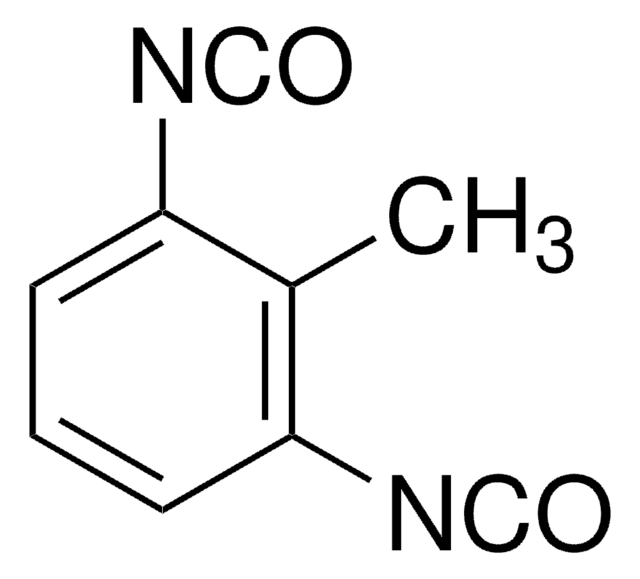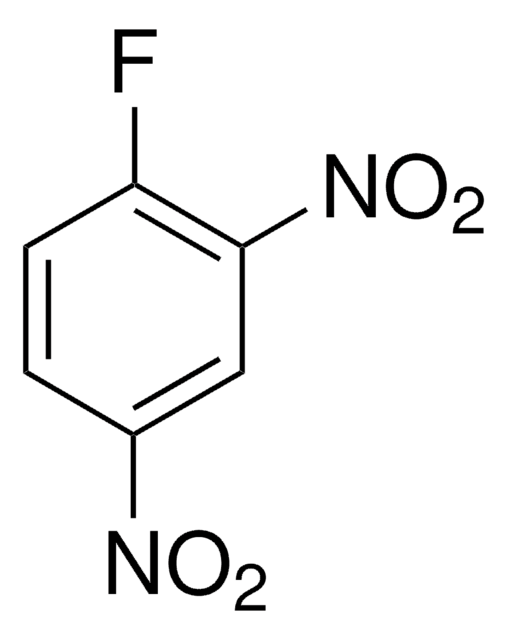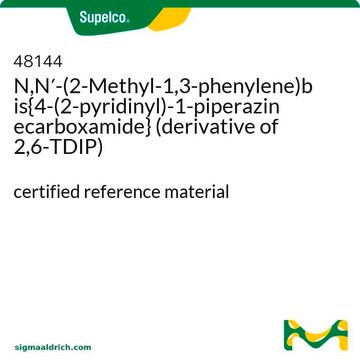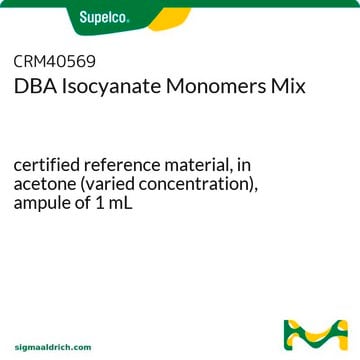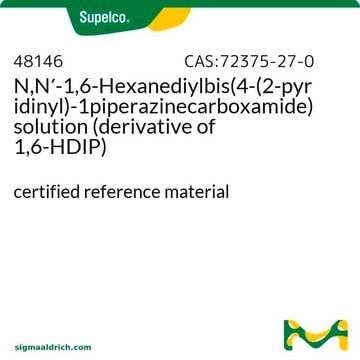33493
2,6-TDI
analytical standard
Synonim(y):
Tolylene-2,6-diisocyanate, 2-Methyl-m-phenylene diisocyanate
About This Item
Polecane produkty
klasa czystości
analytical standard
Poziom jakości
temp. samozapłonu
>1148 °F
okres trwałości
limited shelf life, expiry date on the label
metody
HPLC: suitable
gas chromatography (GC): suitable
współczynnik refrakcji
n20/D 1.571 (lit.)
tw
129-133 °C/18 mmHg (lit.)
gęstość
1.225 g/mL at 25 °C (lit.)
Zastosowanie
cleaning products
cosmetics
environmental
food and beverages
personal care
format
neat
temp. przechowywania
2-8°C
ciąg SMILES
Cc1c(cccc1N=C=O)N=C=O
InChI
1S/C9H6N2O2/c1-7-8(10-5-12)3-2-4-9(7)11-6-13/h2-4H,1H3
Klucz InChI
RUELTTOHQODFPA-UHFFFAOYSA-N
Szukasz podobnych produktów? Odwiedź Przewodnik dotyczący porównywania produktów
Opis ogólny
Find all available reference materials for compounds listed in 10/2011 here
Zastosowanie
Hasło ostrzegawcze
Danger
Zwroty wskazujące rodzaj zagrożenia
Zwroty wskazujące środki ostrożności
Klasyfikacja zagrożeń
Acute Tox. 2 Inhalation - Aquatic Chronic 3 - Carc. 2 - Eye Irrit. 2 - Resp. Sens. 1 - Skin Irrit. 2 - Skin Sens. 1 - STOT SE 3
Organy docelowe
Respiratory system
Kod klasy składowania
6.1A - Combustible acute toxic Cat. 1 and 2 / very toxic hazardous materials
Klasa zagrożenia wodnego (WGK)
WGK 2
Temperatura zapłonu (°F)
230.0 °F - closed cup
Temperatura zapłonu (°C)
110 °C - closed cup
Środki ochrony indywidualnej
Eyeshields, Faceshields, Gloves, type ABEK (EN14387) respirator filter
Choose from one of the most recent versions:
Masz już ten produkt?
Dokumenty związane z niedawno zakupionymi produktami zostały zamieszczone w Bibliotece dokumentów.
Klienci oglądali również te produkty
Nasz zespół naukowców ma doświadczenie we wszystkich obszarach badań, w tym w naukach przyrodniczych, materiałoznawstwie, syntezie chemicznej, chromatografii, analityce i wielu innych dziedzinach.
Skontaktuj się z zespołem ds. pomocy technicznej